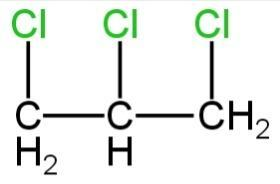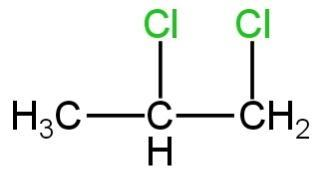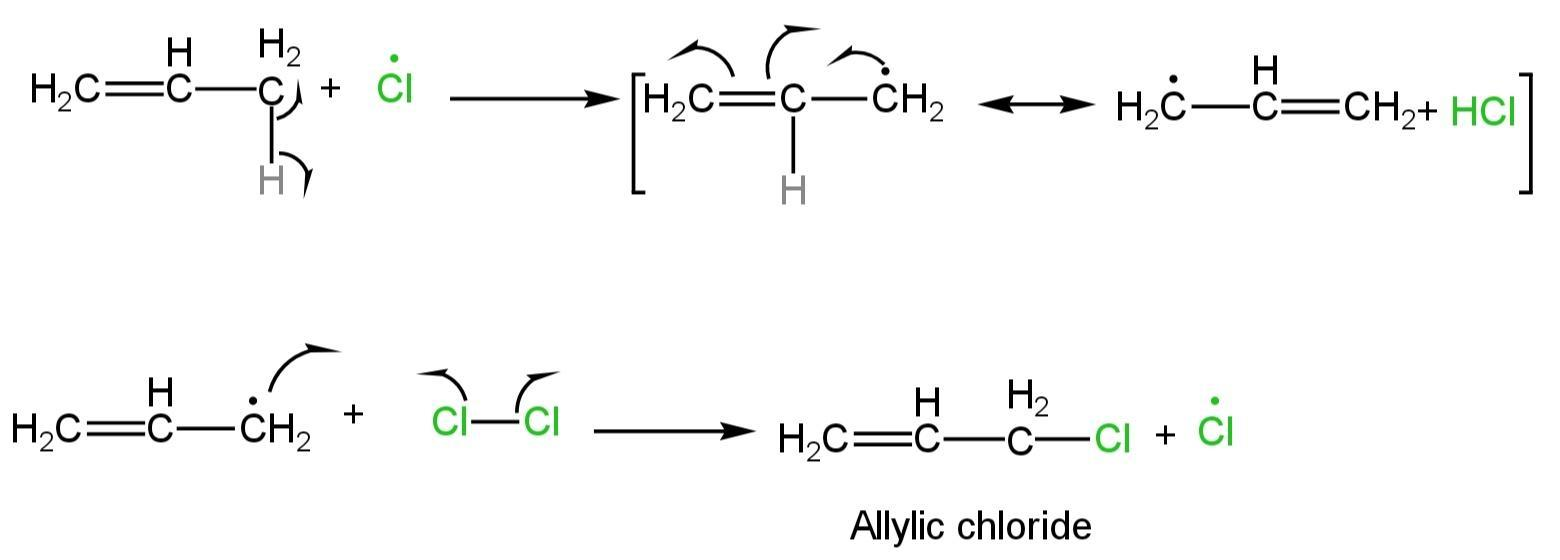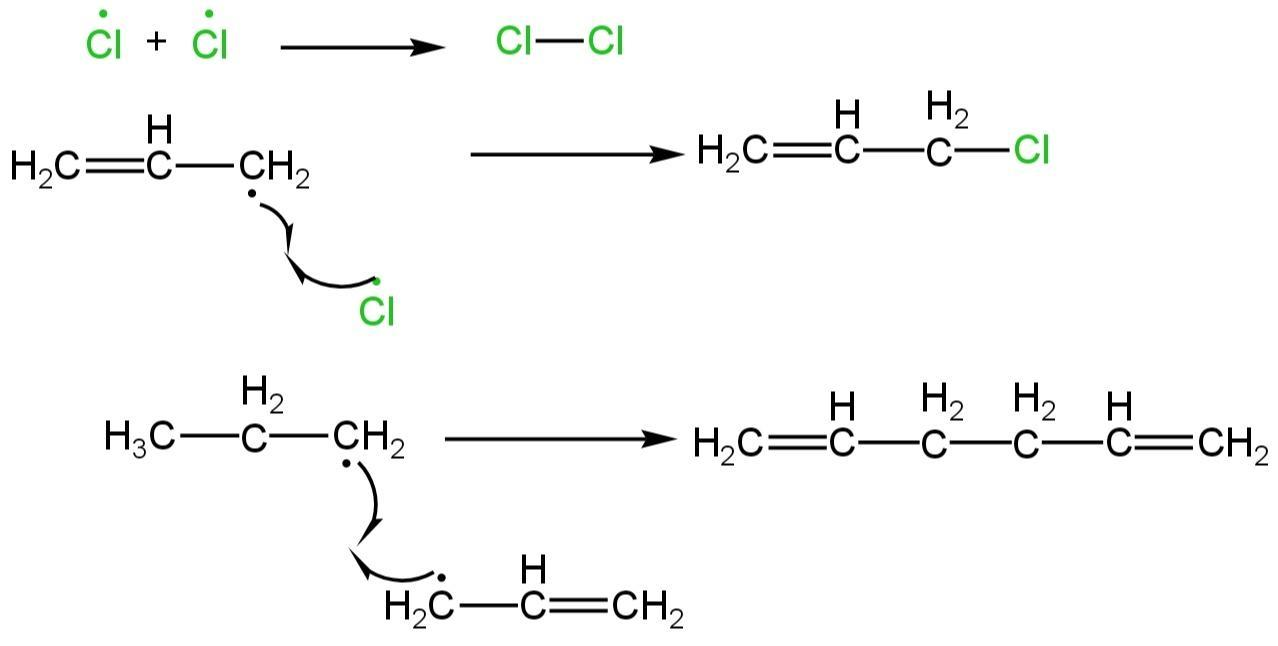
Propene when heated with chlorine at about 773K forms
A.

B.

C.

D. All of these
Answer
220.8k+ views
Hint: Halogenation of alkenes is the reaction of alkenes with chlorine, bromine, or iodine to produce a vicinal dihalide. This reaction happens in the existence of inert and non-nucleophilic solvents like methylene chloride, chloroform, or carbon tetrachloride.
Complete Step by Step Solution:
In this question, it is given that propene is undergoing a reaction with chlorine at about 773K. We have to find out the product it will form.
We know that propene will react with chlorine and will undergo halogenation.
It is because halogens can act as electrophiles to attack a double bond in an alkene.
A double bond depicts an area of electron density and thus acts as a nucleophile.
As chlorine approaches the double bond, electrons in the double bond are repelled by the electrons in the bromine molecule resulting in a polarization of the halogen bond.
This establishes a dipolar moment in the halogen molecule bond.
Then heterolytic bond division happens and one of the halogens acquires a positive charge and reacts as an electrophile.
This reaction ensues in two steps.
This reaction occurs at low temperatures.
But at high temperatures, chlorine undergoes homolytic cleavage to form chlorine free radicals.
This reaction occurs in three steps.
Initiation step
In the initial step of the addition, the Cl-Cl bond undergoes homolytic cleavage.
Chlorine free radicals are formed.

Image: Initiation step
Propagation step
One chlorine radical generated by homolytic cleavage in the initiation step eliminates allylic hydrogen from propane.
A radical intermediate is produced, which is stabilised by resonance.
So, allylic halogenation is preferred.
The intermediate radical then reacts with a chlorine molecule to produce the allylic chloride product which again forms the chlorine radical, which starts again the radical chain mechanism.

Image: Propagation step
Termination step
Termination happens by the combination of bromine radicals, one bromine radical with one allylic radical, and two allylic radicals.

Image: Termination step
So, the product formed in this reaction is A.
So, option A is correct.
Note: Numerous routes exist for the halogenation of organic compounds, comprising free radical halogenation, ketone halogenation, electrophilic halogenation, and halogen addition reaction. The nature of the substrate specifies the pathway. Fluorination with elemental fluorine is extremely exothermic so highly specialised conditions and devices are employed.
Complete Step by Step Solution:
In this question, it is given that propene is undergoing a reaction with chlorine at about 773K. We have to find out the product it will form.
We know that propene will react with chlorine and will undergo halogenation.
It is because halogens can act as electrophiles to attack a double bond in an alkene.
A double bond depicts an area of electron density and thus acts as a nucleophile.
As chlorine approaches the double bond, electrons in the double bond are repelled by the electrons in the bromine molecule resulting in a polarization of the halogen bond.
This establishes a dipolar moment in the halogen molecule bond.
Then heterolytic bond division happens and one of the halogens acquires a positive charge and reacts as an electrophile.
This reaction ensues in two steps.
This reaction occurs at low temperatures.
But at high temperatures, chlorine undergoes homolytic cleavage to form chlorine free radicals.
This reaction occurs in three steps.
Initiation step
In the initial step of the addition, the Cl-Cl bond undergoes homolytic cleavage.
Chlorine free radicals are formed.

Image: Initiation step
Propagation step
One chlorine radical generated by homolytic cleavage in the initiation step eliminates allylic hydrogen from propane.
A radical intermediate is produced, which is stabilised by resonance.
So, allylic halogenation is preferred.
The intermediate radical then reacts with a chlorine molecule to produce the allylic chloride product which again forms the chlorine radical, which starts again the radical chain mechanism.

Image: Propagation step
Termination step
Termination happens by the combination of bromine radicals, one bromine radical with one allylic radical, and two allylic radicals.

Image: Termination step
So, the product formed in this reaction is A.
So, option A is correct.
Note: Numerous routes exist for the halogenation of organic compounds, comprising free radical halogenation, ketone halogenation, electrophilic halogenation, and halogen addition reaction. The nature of the substrate specifies the pathway. Fluorination with elemental fluorine is extremely exothermic so highly specialised conditions and devices are employed.
Recently Updated Pages
Difference Between Alcohol and Phenol: Structure, Tests & Uses

Classification of Drugs in Chemistry: Types, Examples & Exam Guide

Class 12 Chemistry Mock Test Series for JEE Main – Free Online Practice

Is PPh3 a strong ligand class 12 chemistry JEE_Main

Full name of DDT is A 111trichloro22bispchlorophenyl class 12 chemistry JEE_Main

Sodium acetate on heating with soda lime produce A class 12 chemistry JEE_Main

Trending doubts
Understanding Atomic Structure for Beginners

Understanding Entropy Changes in Different Processes

Common Ion Effect: Concept, Applications, and Problem-Solving

What Are Elastic Collisions in One Dimension?

Free Radical Substitution and Its Stepwise Mechanism

Understanding Geostationary and Geosynchronous Satellites

Other Pages
NCERT Solutions For Class 12 Chemistry Chapter 9 Amines

Test for Phenolic Group

JEE Advanced 2026 Revision Notes for Practical Organic Chemistry

NCERT Solutions for Class 12 Chemistry Chapter 2 Electrochemistry

Convert chloro benzene to phenol class 12 chemistry JEE_Main

NCERT Solutions For Class 12 Chemistry Chapter 10 Biomolecules - 2025-26




